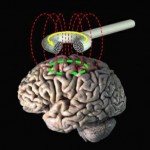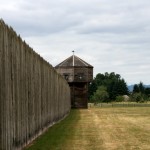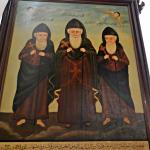Sorry for the delay in posting. I’ve been wrapped up finishing the final exams/programming assignments for the distance learning classes I’ve been taking from Stanford on Machine Learning and AI. If you want to register to take any of the Spring offerings, you can check the listings here (scroll to the bottom). Anyway, it’s left me in a mood for some science sniping.

I’m coming down on the side of Marc from Bad Catholic when he complains about the overhyped claims of scientists (but mostly science reporters) after electromagnetic stimulation managed to trigger religious feelings. Marc is correct that being able to stimulate religious feeling does not falsify the claims of religious mystics. Transcranial magnetic stimulation can get people to hear music, but that doesn’t mean music does not exist.
Put it this way: if you accept religious people’s subjective experience of god(s) presence as true (meaning they truly think that’s what they’re experiencing) it makes sense that there is a physical change in their brain when they experience rapture and that this experience can be retriggered if you can get close enough to the in-brain conditions. What else would you expect? Christians who reported that they were happy during a religious experience but whose dopamine levels stayed flat? Saying an experience can’t be true if you see physical markers in the brain or endocrine system is like saying anxiety can’t be real if it’s subjective experience can be triggered by adrenaline shots.

The mind-brain question is complicated, but there’s no denying physical stimulation can have a powerful effect on our emotions (cf the facial feedback hypothesis). It’s not a disproof of religious claims and experiences. The only cases in which it would be is when visions are always or usually paired with physical stimulants. I wouldn’t trust the subjective experiences of a cult that made a habit of licking hallucinogenic toads or a futurist one that implanted electrodes in their brains.
— — —
The next example of bad science writing also comes from the Bad Catholic blog. He linked today to an article in The Guardian that reports Italian scientists believe the Shroud of Turin could not have been created using any process know at the time of its provenance.
The scientists set out to “identify the physical and chemical processes capable of generating a colour similar to that of the image on the Shroud.” They concluded that the exact shade, texture and depth of the imprints on the cloth could only be produced with the aid of ultraviolet lasers – technology that was clearly not available in medieval times.
I’ll confess I have no rebuttal, but this is largely because the article is horribly vague. Let’s assume the Italian team tried a variety of ways to mark a similar piece of cloth and found that UV lasers best resembled the Shroud. Well, then my first question is how they scored the contenders. Are they looking for the best color match? The best chemical match? Did they make the marks and then put all the cloths through a simulated aging process so any pigments could go through the appropriate degradation?

And how close did the UV laser test get? Remember that the newest Higgs data hit the two sigma mark (less than 5% chance of getting that strong an indicator if there wasn’t anything to cause it) and the scientists reminded us that, for this result, they would hold out for a five sigma result before they would confirm the Higgs’s existence. It’s not uncommon for science writers to completely ignore methodology and significance, so it’s not uncommon for me to ignore these articles unless I see them picked up by publications I trust.
I’d love some links to scientific, peer-reviewed write-ups of these kinds of results. I was told in RCIA that the image of Our Lady of Guadalupe has similar, unreproducable properties, but the book I was lent only repeated these claims without explanations. If these claims were verified, I’d see them as fairly strong evidence in favor of the Christian claim.
But, lest I be accused of concealing my true rejection, I should note that an inability to reverse-engineer old artifacts is not proof of their supernatural origin. Otherwise our failure to reproduce Greek fire would be evidence of… I’m not sure what; magic or aliens or Zeus or just the generally uncanny. Evidence that the Shroud of Turin or the Guadeloupe tilma were not made by historically available materials would substantially shift my posterior probablity that Christianity was true, but they might not be able to push it past the critical value needed for conversion. To date though, I still haven’t seen evidence, just claims.











